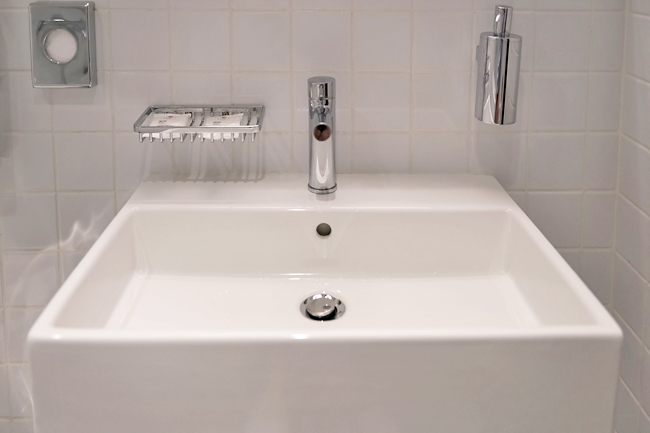Jeanne Huber
THE WASHINGTON POST – Q: The sink in our primary bathroom has a foul-smelling odour to it. What is the best way to get rid of that odour?
A: When a sink (or bathtub, shower or toilet) stinks in a bathroom that isn’t used very often, the first thing to suspect is that water in the U-shaped trap below the drain has evaporated. In that case, the cure is easy: Run water down the drain, so the bend refills and acts as a plug to keep sewer gases from seeping into your home.
The smell, often described as rotten eggs or a dead animal, comes from bacteria that feed on organic matter in the wastewater.
But in the main bathroom in your home, there is probably some other cause. Perhaps the smell is coming from something decaying in the P-trap or in the piping between the sink drain and the P-trap.
Bacteria feeding on clumps of hair clogged with soap scum, for example, can create a nasty smell.Disassembling a P-trap and putting it back together is a job that even novices should be able to tackle themselves.
Home Depot calls it a beginner project, doable in less than two hours. But, as with all plumbing repairs, do it when a nearby hardware store or home centre is open, just in case you need a replacement part.

Clear the space under the sink, cover the cabinet floor with a towel and place a bucket under the trap. Put on rubber gloves.
With the faucet off, unscrew the clean-out at the bottom of the P-trap (if there is one). Let the water empty into the bucket.
Then try using just your hands to loosen the nuts on both sides of the bend, starting with the one under the sink drain. (This will be first if there is no clean-out.) If you need more grip, try wrapping the nuts with a rag or washcloth.
If the nuts still won’t budge, you’ll need pliers. Unfortunately, the pliers in many people’s tool kits don’t open wide enough.
Bathroom P-traps are usually one-and-a-quarter-inch (inside diameter) pipes, with nuts that are about one-and-three-quarter in outside diameter; kitchen sinks usually have a one-and-a-half inch pipes, with nuts about two-and-a-quarter inches across.
A tool such as General Tools’ 189 under-sink drain pliers works with both sizes of nuts.
Or look for pliers that are more versatile for other home repairs, such as the 12-inch Channellock tongue-and-groove pliers.
Once all the water has drained, remove the trap and wash it out.
If possible, keep the nuts and washers in place on the adjoining pipes, so you don’t have to figure out what goes where.
Let any solids, hair or other debris settle out in the bucket or scoop it all into a trash bag, then empty the stinky water into the toilet.
Also wash out the drain pipe between the sink and the P-trap; you can turn on the faucet for this, but make sure the bucket is underneath. A nylon- or metal-bristle brush can be handy.
Assuming the sink was draining well before you took everything apart, you are then ready to reassemble the pieces. If the sink was draining slowly, disassemble and clean the trap arm (the curved section of pipe between the P-trap and the wall). If the pipe into the wall is plugged, you might need a drain auger, such as the DrainX drain auger pro with 25 feet of cable, or help from a plumber.
Reassembling a P-trap is straightforward. First attach the trap arm, if you took it off, then connect the P-trap, so the longer arm of the U connects to the sink drain and the shorter side connects to the trap arm. If you’re reusing parts, the only tricky details are to slip the nuts onto the unthreaded sections first, then add the washers, so the bevelled edge faces the pipe section that has the threads.
Never use Teflon tape on white plastic pipe, but wrapping it around threads on metal pipe can help protect against leaks.
Loosely tighten the nuts as you go, then go back and tighten them all the way once everything is assembled. Use hand pressure alone. Run water in the sink, check for drips and tighten any nuts that are loose. If you need pliers, use a gentle touch, so you don’t crack anything.
You don’t say why you are certain the smell is coming from the sink and not the tub, shower or toilet.
All of these can have similar issues, and in a small room, it might be difficult to pinpoint the source. If cleaning the sink P-trap doesn’t fix the problem, you might want to also examine the drains for those or enlist the help of a plumber.
If the smells persist once all the P-traps are clean, free-flowing and filled with water, there could be a plug in the vent pipe system that carries sewer gases up to the roof.
Or there could be a leak or a plugged pipe somewhere. To diagnose and fix that, you’d definitely need help from a pro.







